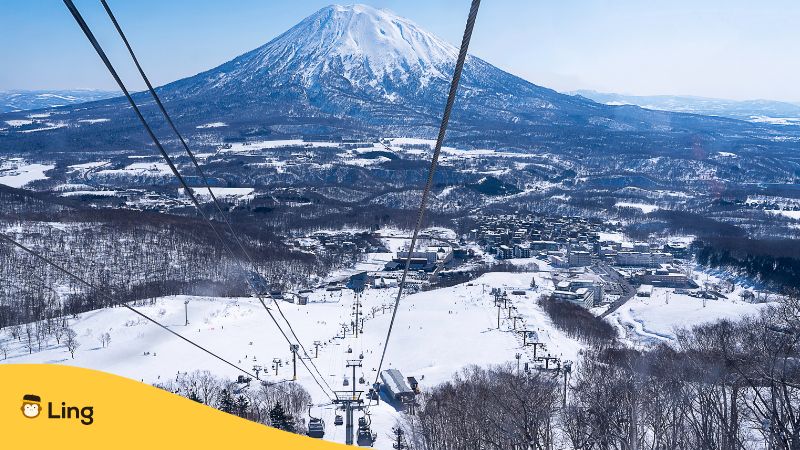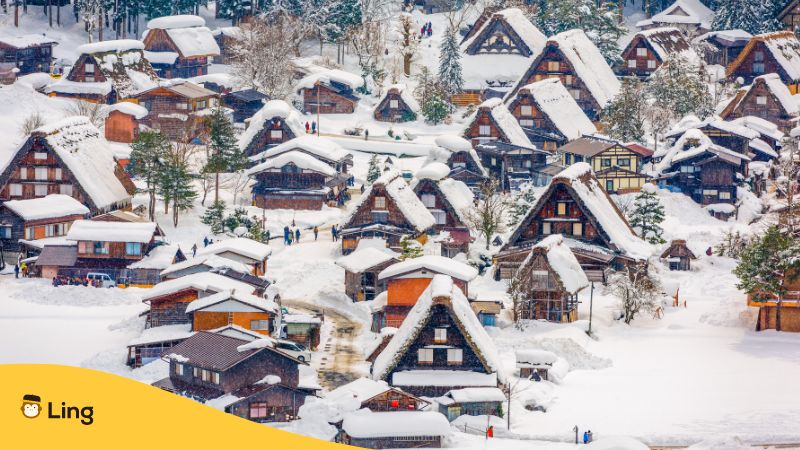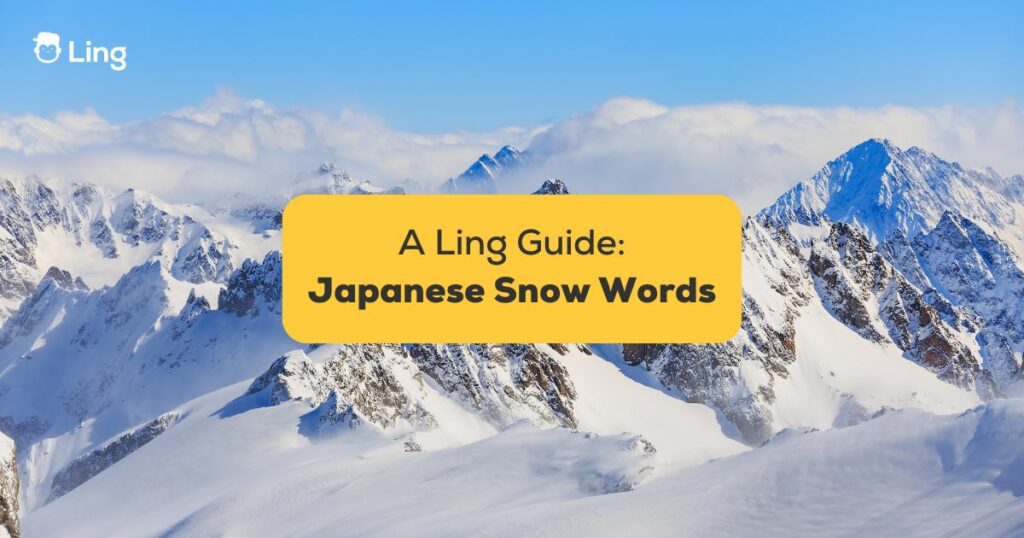I was talking to a friend who was recounting her first winter experience in Japan. No wonder I was low-grade feeling envious because, well, the yuki (雪) or snow quality in this country is just INSANE to the point that even if you’re not a skier, you’ll just want to play in all of its fluffy goodness.
After putting the phone down, I googled winters in Japan and I was amazed to see the beautiful images! That’s when I decided to write this post wherein I’ll share some awesome snow terms in the Japanese language that’ll take your powdery experiences to the next level!
Table Of Contents
Japanese Words For Snow
Mochiyuki (餅雪 )
Ever seen snow that looks suspiciously like soft, delicious mochi? That fluffy, pounded rice cake used in Japanese sweets? Well, that dreamy sight has a name – mochiyuki.
It describes the kind of snow that seriously resembles those tasty mochi treats. Smooth, pillowy mounds that make you want to squish it between your fingers. Except this is frozen precipitation… not something you’d actually want to eat!
The phenomenon happens when snow falls in perfect, tiny particles. No harsh winds to rough it up. Just delicate, feathery flakes gently accumulating into fun, mochi-like shapes. Obviously, you’ll only get to appreciate this winter wonderland during the cold months. Once spring rolls around, that heavenly mochiyuki is gone for good. Until next snowfall at least.
Botan-yuki (牡丹雪)
Heard of snowflakes so big and beautiful that they resemble peonies? That’s botan-yuki for you! We’re talking snowflakes so sizable you can make out all the intricate patterns and details with the naked eye. Not those tiny specks you usually see. Nope – these babies are large and in charge. As for its name, the term literally translates to “peony snow” in Japanese. Makes sense when you picture a single, breathtaking crystalline flake the size of that gorgeous flower.
Kata-yuki (堅雪)
Do you know that crunchy layer of ice on top of snow? The one that forms overnight in spring when temps drop? That’s kata-yuki! Basically, any snow that didn’t fully melt during the day refreezes into a hard, compact surface once that spring chill sets in again at night.
Under that icy layer, the snow might still be soft and powdery. But don’t let the sturdy top fool you into thinking it can handle serious weight. That kata-yuki coating is deceptively thick and dense! Step too heavily and you risk crashing right through that seemingly stable surface. Not a situation you want to find yourself in when exploring snowy areas as winter fades!

Yuki-boshi (雪帽子)
Ever spotted little snow formations that straight-up look like tiny hats? Those adorable icy domes are called yuki-boshi. As in “snow hats” in Japanese. It’s when falling snow perfectly accumulates into these rounded, hat-shaped mounds on surfaces like tree branches or railings. Almost like nature’s very own fun-sized headwear collection.
Zarame-yuki (粗目雪)
You know that weird crystallized snow you sometimes see in spring? The kind that looks like sugarcane or a bunch of frosty little gems clustered together? That right there is zarame-yuki.
The name literally translates to “coarse mesh snow” in Japanese. And it totally fits once you get a good look at this quirky cold weather phenomenon.
Essentially, it forms when snow starts melting in warmer spring temps… only to refreeze overnight when that chill returns. That back-and-forth cycle continues for a few days.
Eventually, the melted and refrozen bits create this beautiful crystalline pattern resembling a mesh-like crust over the surface. Almost like the snow transformed into a sparkling mineral formation.
Japanese Winter Words
Traveling to snowy regions in Japan? You’ll want to know these Japanese winter words because they’ll totally enhance your cold-weather adventures.
Why Visit Japan In Winter?
Winter is undeniably the best ski season to visit Japan. Point blank. For skiers and snowboarders – resorts like Niseko, Hakuba, and Nozawa Onsen offer out-of-this-world powder conditions. We’re talking about the highest quality snow surrounding you with breathtaking mountain scenery.
But even non-skiers have countless reasons to go!
You’d be missing out on spectacles like the Sapporo Snow Festival. Master sculptors create staggeringly massive, intricate snow and ice art. It’s a serious feast for the eyes! The best part? Loads of small towns also host their own unique winter festivals and traditions like lively fire celebrations with energetic dancing and drumming.
Then there are the world-famous snow monkeys soaking in natural hot springs up in the mountains. An absolute must-see. Where else can you witness that iconic Japanese wildlife moment up close? Nowhere.
On top of the extraordinary sights, winters bring peak coziness. You’ll go hot spring hopping, warming up in soothing outdoor onsens after sightseeing. And let’s not forget – you’ll avoid peak season crowds at all the major attractions and temples.
So, friends… the case is clear!
If you crave unforgettable cultural immersion, spectacular nature, and comfy cold-weather vibes minus the tourist chaos – there’s no better time to be in Japan than winter. It simply can’t be topped.

Learn Japanese For The Winter Season!
Knowing some basic Japanese enriches your whole travel experience. It shows respect for the culture right off the bat. Plus, the locals really appreciate when foreigners make an effort with their language – even simple phrases go a long way.
But it’s not just about courtesy. Having a vocabulary opens your eyes to new cultural perspectives. You start understanding how differently Japanese people view and describe things compared to your own lens.
Take food for example. Instead of just ordering “sushi”, you’ll grasp the distinctions between nigirizushi, makizushi, inarizushi. Suddenly you’re appreciating the cuisine more deeply.
The same goes for sights and activities. Basic words let you connect over shared joys and experiences when chatting with locals. You both marvel at a bamboo forest… except now you know they call it a take-no-mori.
Grasping the language prevents confusion too. Menus, signs, and instructions all start making more sense when you recognize common words. You can navigate smoothly instead of feeling totally lost.
At the end of the day, learning Japanese properly immerses you in the culture. You’re not just a tourist – you engage authentically. That radically enhances any Japan travels.
Which brings me to the Ling app – hands down the best app for acquiring Japanese rapidly. Out lessons teach practical conversation through games and culture notes developed by real native speakers! Don’t believe me? Give it a try today!



































































